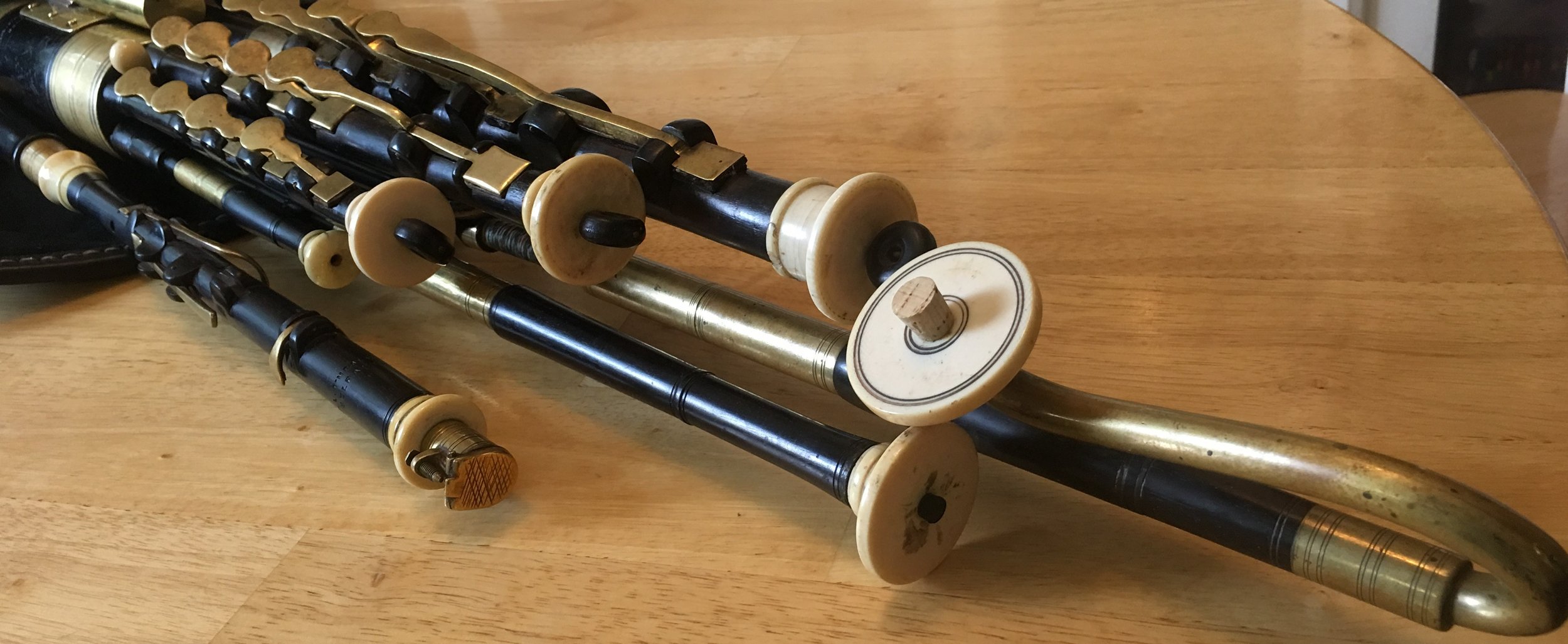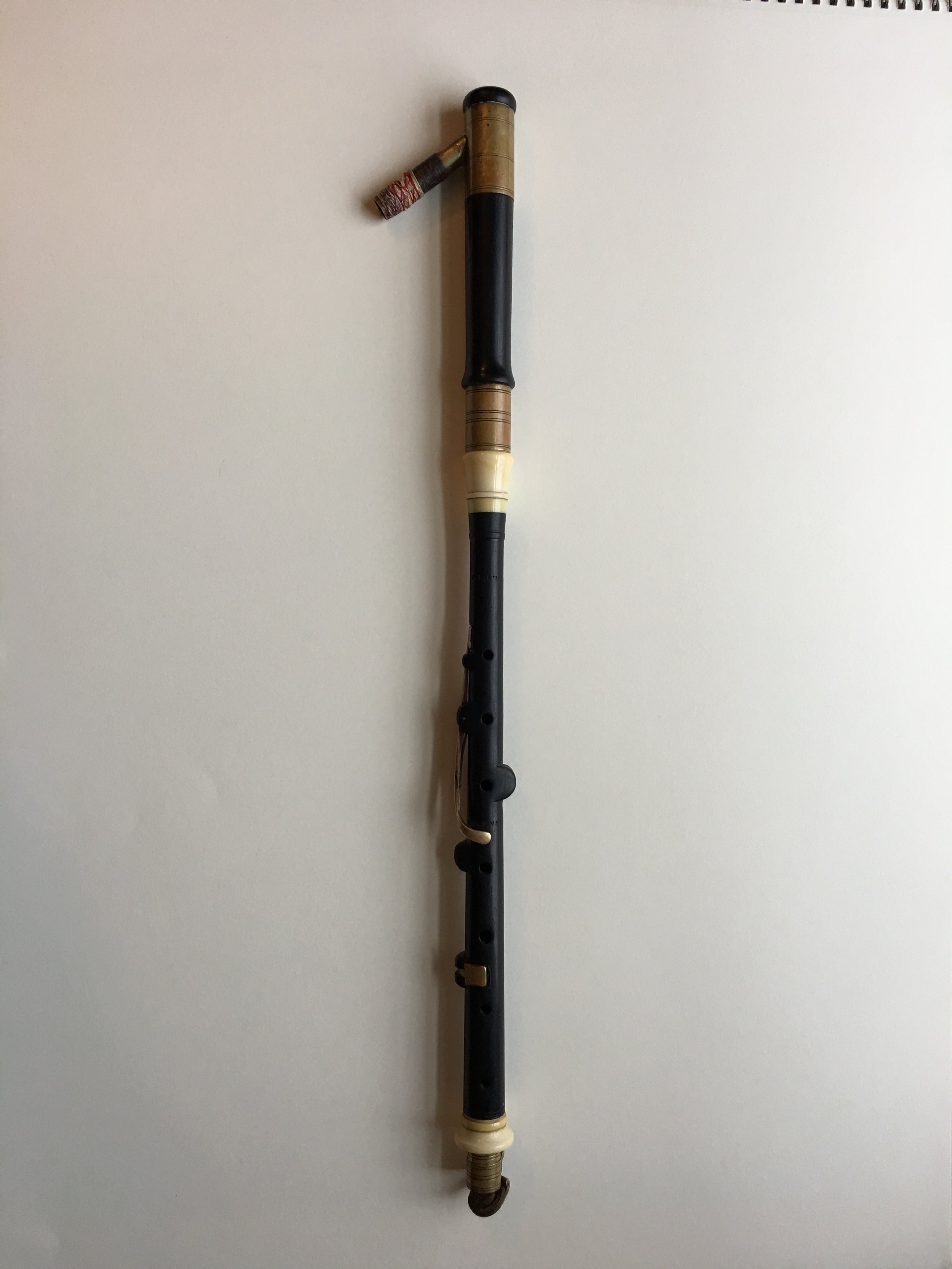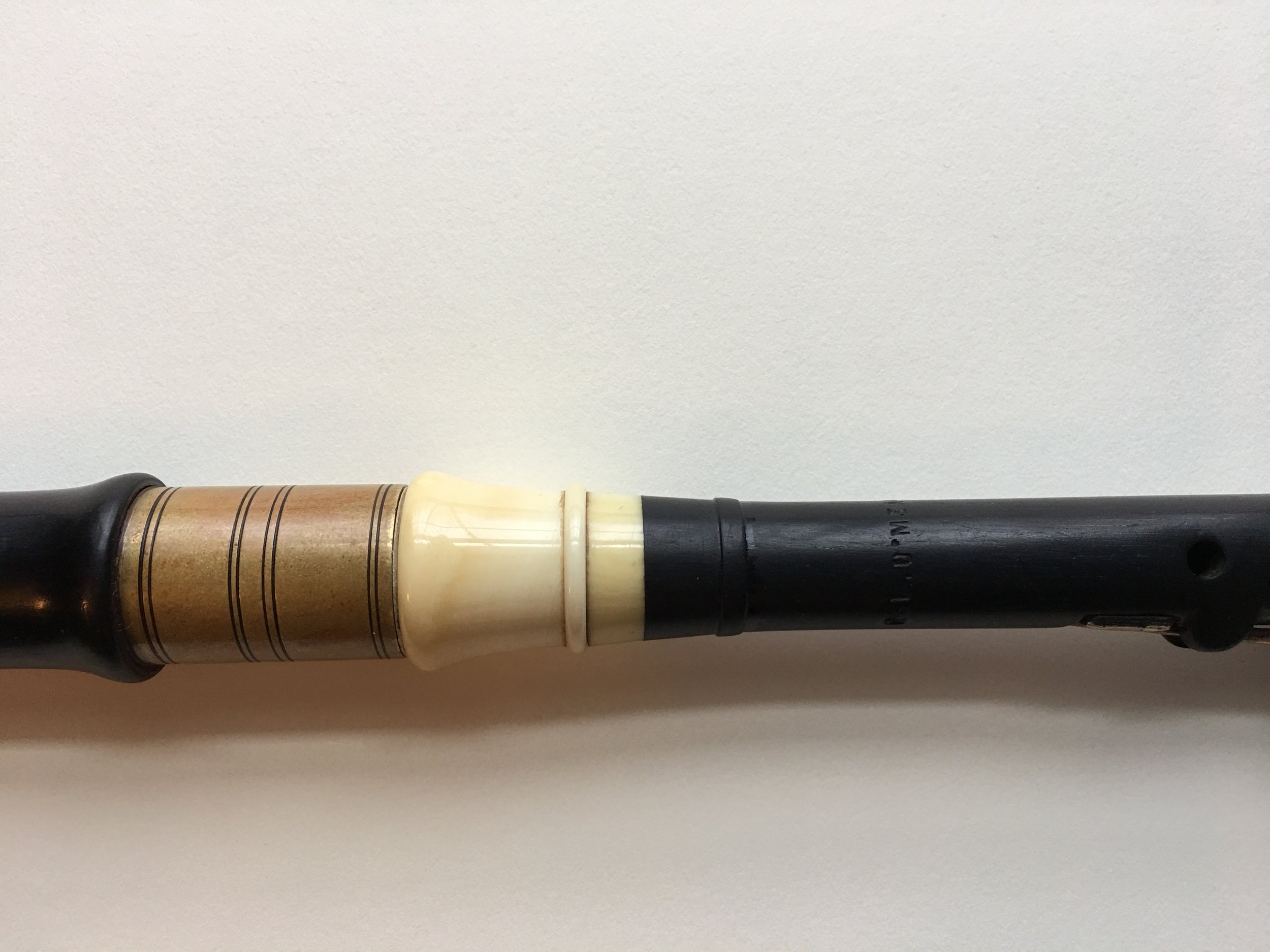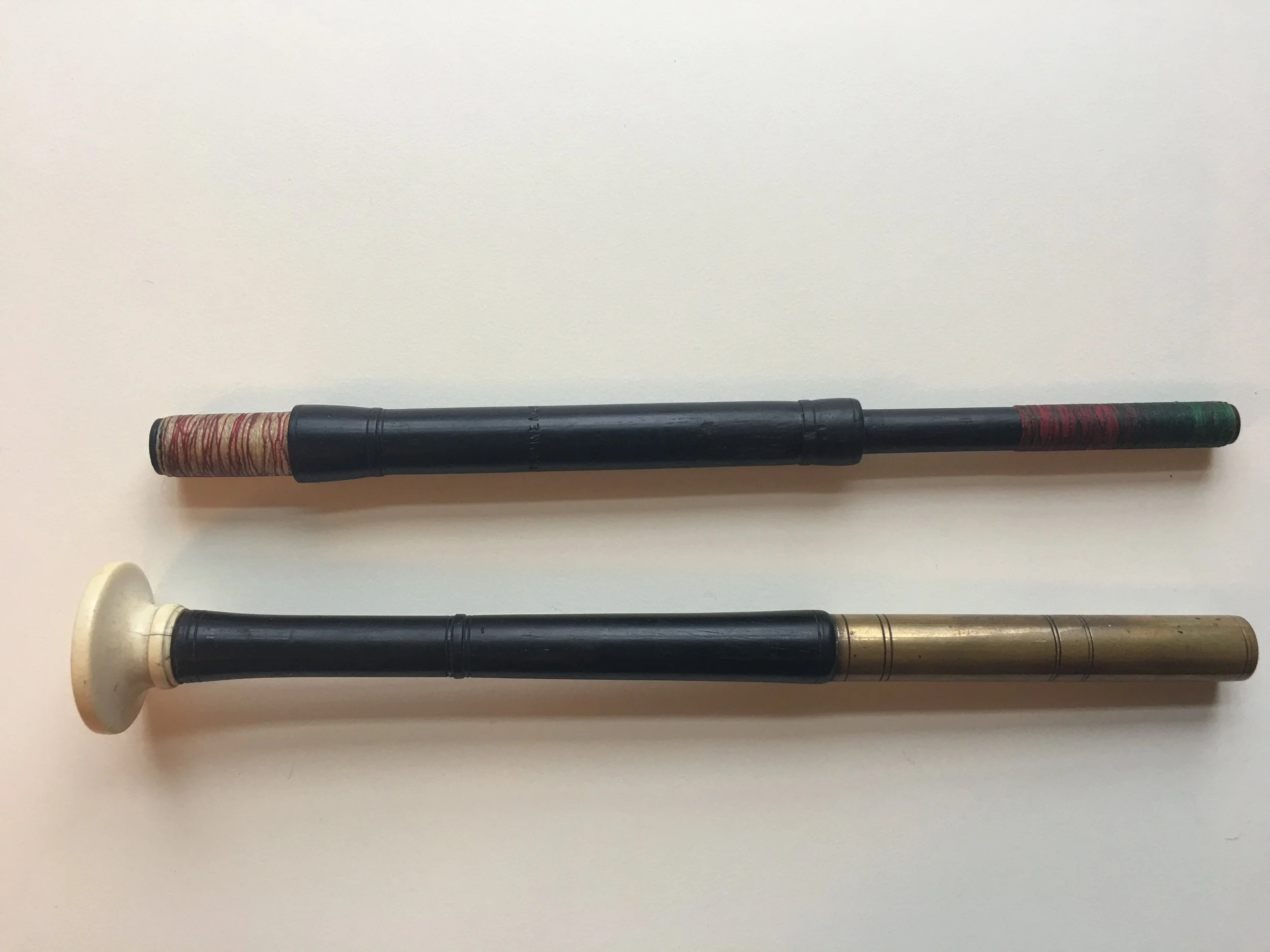A Glimpse into the past
Uilleann pipe full set in D by R.L. O’Mealy, ca 1899
I was contacted by a customer of mine, whom throughout this entire process I have come to call a friend, to work on a set of pipes made by the late pipe maker R.L. O'Mealy. I was conscripted to provide new reeds, which I faithfully copied using the chanter reed as a basis. I am told the set was made in 1899, which would make it a very early set. I think this is very likely, as I have not seen full sets of his that feature a tenor regulator, and many of his later sets followed the Taylor Brothers' traditions. It included the coffin-shaped case made by O'Mealy, lined with felt.
The set clearly had seen its better days, having sustained significant damage on the lower portion of the baritone regulator. It seemed it was repaired with glue, but not reamed, so there was some level of difficulty measuring the bell section of the bore. The bass regulator joint was also cracked, and cracks had developed in other parts of the instrument.
The set materials seemed to be ebony, brass and pre-ban ivory. Ebony seemed to be the primary wood, with the exception of the mainstock, which looked like it was an ebonized boxwood (boxwood being a wood material O’Mealy favored).
The chanter is a narrow-bore D design that seems to tune to A=440, but it seems to tune more happily near A=432. It features F, C, third octave D keys, keyblocks for G#, A#, and third octave E keys. It also has a popping valve for the bell with a tuning screw.
The only reed that I could tell was originally made by O'Mealy himself was the chanter reed. The rolled staple is made of brass, and I understand he preferred the use of brass staples. The brittle state of the hemp also leads me to believe that it is original. It plays well up through the third octave, and with a very sweet tone, which is surprising, considering its age. It is very small, with a head width of 10mm.
The chanter also has the odd feature of five maker stamps. I cannot imagine why a pipemaker would wish to have five maker stamps on one instrument. Perhaps in his early years he wanted to make sure his name was clearly visible on the instrument? He did possess some business acumen in terms of marketing himself, as he went to great lengths to getting his name out into the world as a new pipe maker in Belfast.
Looking at the remainder of the set, I had the impression that the bass and baritone regulators were added on later. The maker stamp is covered by the brass plate that covers the air inlet to the bass regulator. The keywork design is slightly inconsistent across all three regulators, particularly between the bass/regulator designs, and the tenor design. Perhaps this information lends to the thought this is an earlier design that he was experimenting with? In any case, it seems the bass and baritone regulators were added as an afterthought.
Narrow-bore uilleann bagpipe chanter in D by R.L. O’Mealy, ca 1899The tenor regulator is the odd duck of the bunch, which features 4 keys: F#, G, A, and B. The tenor regulator’s keys seems to be situated lower than the baritone and bass, so as to prevent the player from sounding a strange chord across all the regulators. The bore data suggests a separate reamer was used as compared to the chanter, whereas the baritone and bass regulator bore data suggests the same reamer as the chanter was used. It is possible the odd tenor faithfully copied from another in his possession, and included in the set for the purpose of having a full set, irrespective of how it played with the others.
While the set was in my care a second time, and an overly long one due to the timing of COVID, I noticed some marks on the underside of the baritone regulator keys that indicated the notes of the keys. You may view the inscribed letters on the keys below. It was a curious discovery, and one I was happy to find as I had not heard anyone speak of it before.























